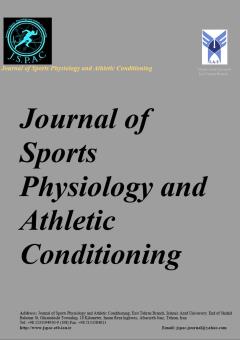The selected rehabilitation exercise program effect on the social development of autistic children - a single-subject study
Subject Areas : Sport Physiology
Seyedeh Maedeh Basamtabar
1
![]() ,
Keyvan Molanorouzi
2
*
,
Elahe Arabameri
3
,
Ali Kashi
4
,
Keyvan Molanorouzi
2
*
,
Elahe Arabameri
3
,
Ali Kashi
4
1 - Ph.D. candidate in Motor Behavior, Department of Physical Education and Sport Sciences, Science and Research Branch, Islamic Azad University, Tehran, Iran
2 - Department of motor behavior and sport psychology, Science and Research Branch, Islamic Azad University, Tehran, Iran.
3 - Associate professor, Faculty of Sports and Health, University of Tehran, Tehran, Iran.
4 - Associate Professor of Behavioral Sciences in sport, Sport Sciences Research Institute, Tehran, Iran
Keywords: autism, targeted exercise program, social growth,
Abstract :
Background: Autism spectrum disorder (ASD) is a neurodevelopmental condition characterized by being one of the most prevalent developmental disorders, marked by difficulties in motor skills, social interactions, repetitive behaviors, and movements. With the rising prevalence of autism, the challenges and impact of this condition on children, their families, and the broader community underscore the necessity for an extensive rehabilitation training program designed to enhance the social development skills of autistic children from early childhood through elementary school years. Hence, the objective of this study is to explore the impact of a targeted rehabilitation training program on the social development of autistic children.
Materials and Methods: For this research and case study, we chose two autistic children, from a rehabilitation center in Tehran. This selection was made through the A-B-A method, considering their HFA and IQ scores (60-90). The participants were a 12-year-old boy with an IQ score of 67 and an 11-year-old girl with an IQ score of 60. Following their parents' approval, they agreed to take part in the study.
Results: The results of the T-test showed the significant effect of eight weeks of functional and Extra functional exercises on dorsi Flexion, Plantar Flexion and ground reaction force. (P≤ 0/001).
Result: The research indicated that the targeted rehabilitation activities were successful in enhancing the social abilities of children with autism. In male and female subjects, the mean scores of the Vineland test increased in the post-intervention phase. They demonstrated improvement across all subtests related to general self-help, self-help in eating, self-help in dressing, self-leadership or self-direction, movement and mobility, as well as communication and sociability.
Conclusion: The results indicate that a 12-week program of targeted rehabilitation activities, incorporating play and rhythmic exercises, enhances a child's ability to engage with peers, improve coordination, increase involvement, and boost self-assurance and social abilities in children with autism.

